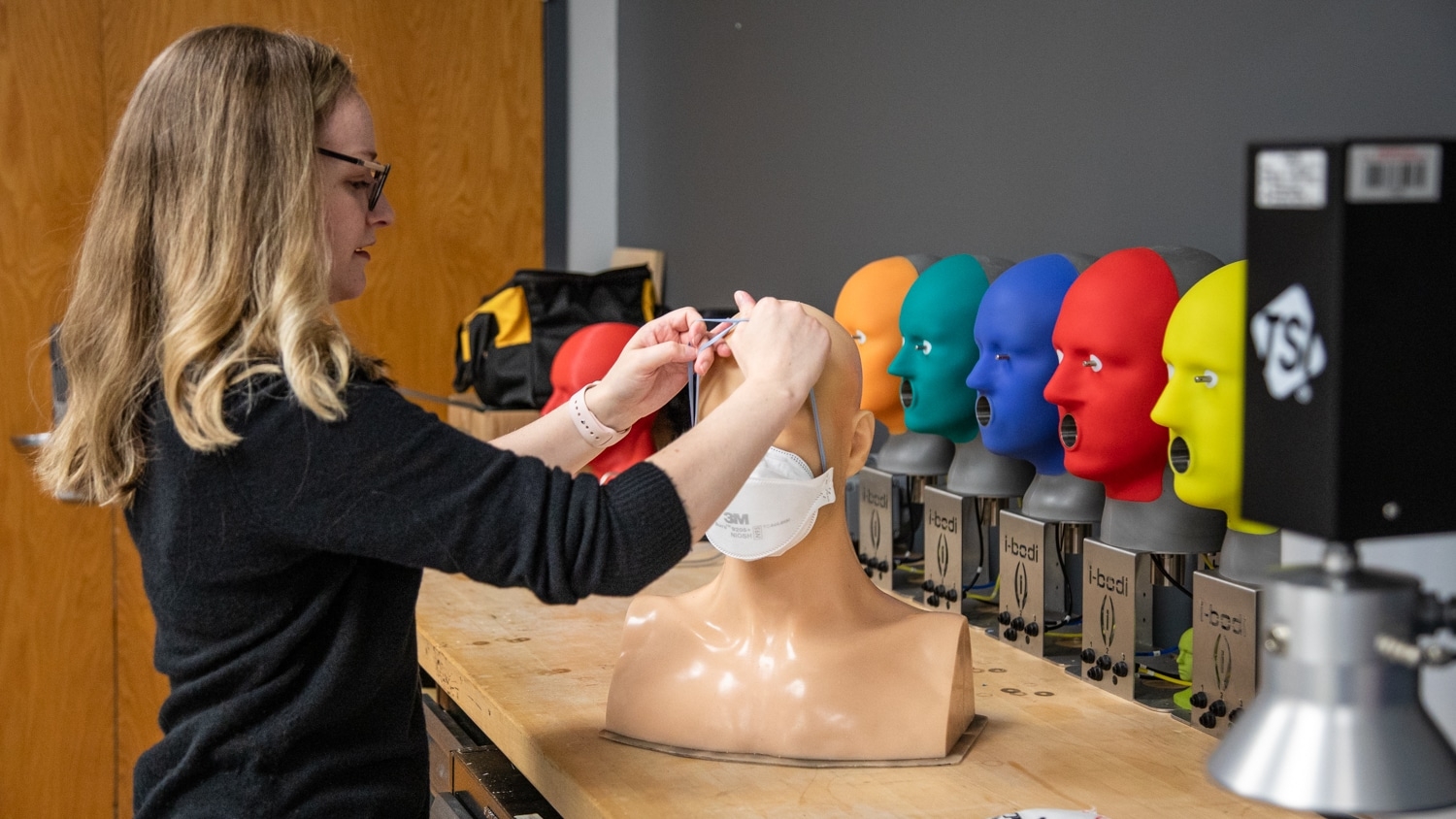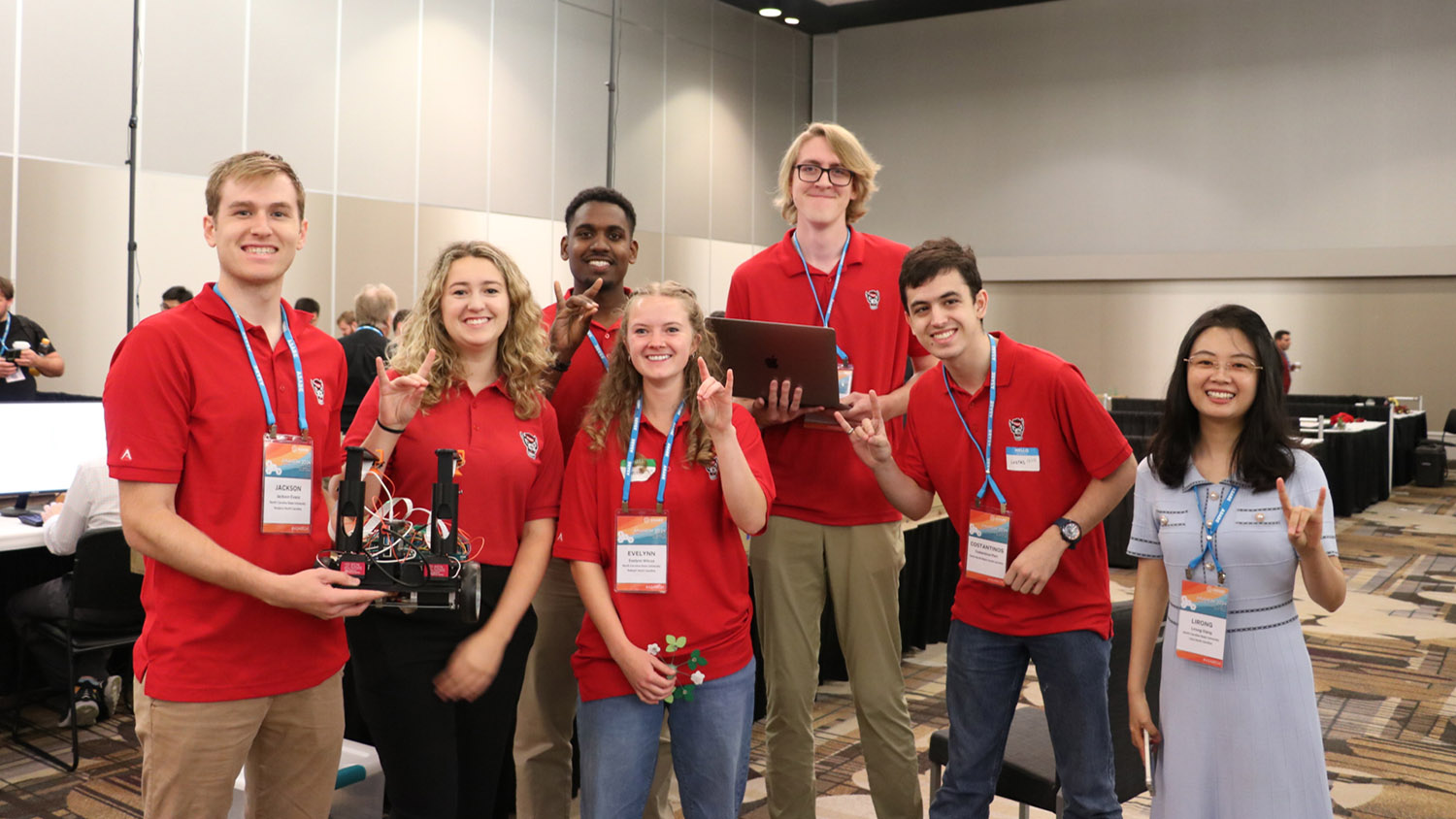Art, engineering and infinity: Four NC State students display their work with Escher and da Vinci
 The concept of infinity and the desire to illustrate the creative process gave a team of engineering students the opportunity to showcase an electronic display they developed alongside the works of M.C. Escher and Leonardo da Vinci.
The concept of infinity and the desire to illustrate the creative process gave a team of engineering students the opportunity to showcase an electronic display they developed alongside the works of M.C. Escher and Leonardo da Vinci.
The opportunity stems from collaboration between NC State and the North Carolina Museum of Art (NCMA), as part of a series of STEAM initiatives that combine science, technology, engineering and math (STEM) with art and design to promote innovation.
Because of its interest in STEAM, NCMA came to NC State with the idea of having engineers use electronics to create a visual display that tied together the works of da Vinci and Escher. The resulting student exhibition, “Engineering Infinity,” opened in October to coincide with the opening of the museum’s exhibitions: “The Worlds of M.C. Escher: Nature, Science, and Imagination” and “Leonardo da Vinci’s Codex Leicester and the Power of Observation.”
Four electrical engineering undergraduate students – Evan Heiman, Andy Tong, Robert Jamison and Jesse Davi — took on the project as part of their senior design course. The four earned their degrees in May 2015.
They developed a cube made of 512 light-emitting diodes (LEDs), 64 on each side, which is suspended on translucent columns. The LEDs are programmed to display 19 different visual routines.
Video of the cube in action can be seen at https://youtu.be/j5fhjTrBzoM.
That LED cube is surrounded by a second cube made of two-way mirrors, allowing viewers to see inside but essentially trapping and reflecting light from the LEDs.
“This was a collaboration with NCMA to develop a display that both expressed the STEAM concept and was consistent with the subjects of Escher’s work, such as infinity, fireworks and tessellations,” Heiman said.
“The LED cube makes the first image, but it is reflected repeatedly – back and forth between the mirrors – making the images appear to retreat into infinity. Much like Escher did in his work,” said Jamison.
Team members documented their work according to the so-called “design cycle” (ask, imagine, plan, create and improve). The cube was displayed alongside sketches, schematics and other materials documenting the process. These process-oriented artifacts connect to da Vinci’s Codex Leicester, a 500-year-old notebook featuring the artist’s notes, sketches, and observations, and providing a glimpse into the artist’s scientific mind.
Return to contents or download the Spring/Summer 2016 NC State Engineering magazine (PDF, 3MB).
- Categories:


